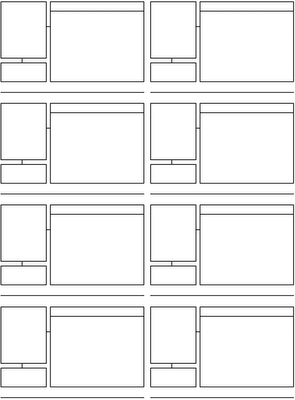
Storyboarding is the process of producing sketches of the shots of your script. The end result looks like comic book of your film (without the speech bubbles).

Why do it?
It helps you think about how your film is going to look. You can work faster on set and as pictures communicate better than words it will allow your camera crew to move their camera and lights, for producers to foresee problems, for the art department to know which parts of the location are going to be in shot and so on. Even the actors will get a feel of what they are going to be shooting!
So I need to be an artist?
Well you can be, but looking at storyboards by Hitchcock or Spielberg you have to admit that they can't draw. There are professional storyboard artists that can give you results that look better than the final film. However its a good idea to bash them out yourself, it allows you to experiment quickly and cheaply, testing out different versions of how a scene may look and play on camera.
Storyboarding is especially useful for complex visual sequences e.g. elaborate shots or special effects sequences. Sometimes a film only uses storyboards for difficult sequences other times the entire film is storyboarded. The Coen Brothers (Fargo, The Big Lebowski) storyboard extensively, allowing them to shoot just the sequences they require for editing, saving both time and money.
Hang on though, pictures are still, movies move.
Ah! You got me there. There are a few tricks storyboard artists have up their sleeves to illustrate movement - whether its movement within the frame (actors walking) or the frame moving itself (camera panning etc.).
Arrows - Suppose the camera is tracking in, following a bad guy's footsteps. Draw in an arrow pointing into shot to show the camera's movement. Now the hero's head is pulled back by one of the bad guy's goons. Use an arrow to show the movement of the head being turned. What about a zoom in? From each corner draw in arrows pointing to the centre, draw in a new smaller frame to show the end of the zoom. Generally I try and use thick white arrows to show camera moves and thin black arrows to show objects moving.

The floating frame - What if you want to show the camera panning to show a cityscape, or following a character as they walk through an airport? There's two options here: 1) Illustrate one shot using more than one storyboard frame showing the key stages of the shot's movement across a number of frames or 2) Draw out the entire scene (e.g.. the horizon of a city) and place a frame on it with an arrow indicating the direction of movement.
Transitions - The storyboard can also include transitions in your film. Write these in the gaps between the frames e.g.. DISSOLVE TO :
No comments:
Post a Comment